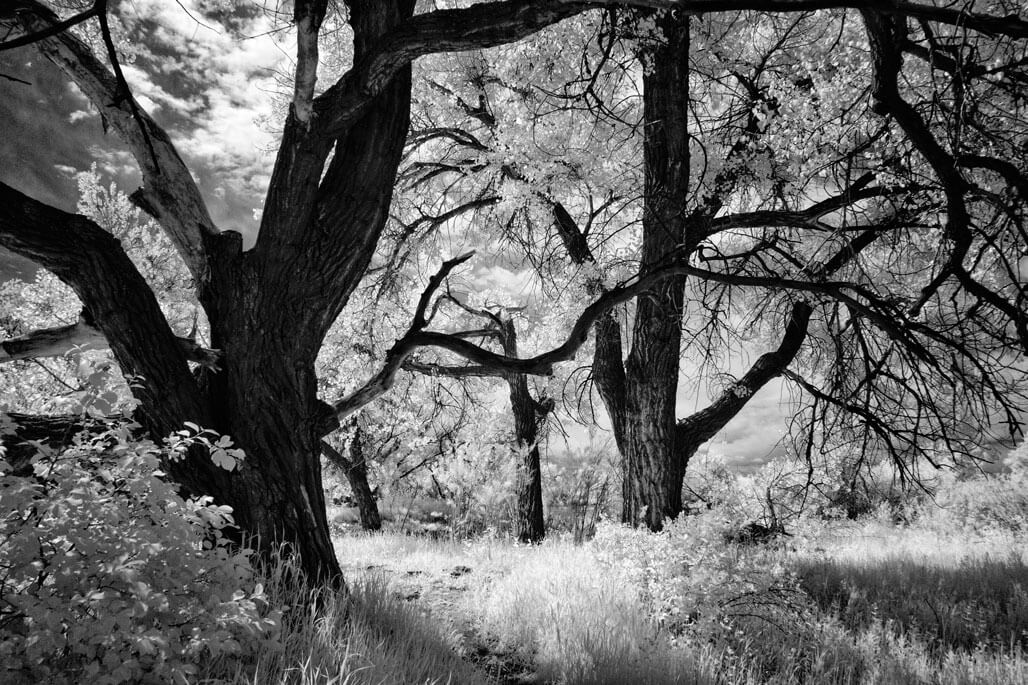Welcome to the World of Invisible Light
Today’s Post by Joe Farace
For years, astronomers used the infrared spectrum for astrophotography of distant non-terrestrial subjects and there are plenty of terrestrial applications for infrared photography, including forensic investigation and aerial crop or forest surveys, but my philosophy is that photography is, or should be, fun. Part of having fun, to me anyway, is trying new things. Infrared photography is lots of fun because it helps you look at your world in a new way and lets you create images are unlike any other technique you’re likely to try.
 The above image was made with a Panasonic Lumix G5 (converted to IR by LifePixel) and 12-32mm lens with an exposure of 1/400 sec at f/11 and ISO 400.
The above image was made with a Panasonic Lumix G5 (converted to IR by LifePixel) and 12-32mm lens with an exposure of 1/400 sec at f/11 and ISO 400.
In both film and digital infrared photography, tree leaves appear to be almost white. This is a effect produced by deciduous trees and grass because they reflect the sun’s infrared energy instead of absorbing it. There are many different varieties and sizes of deciduous trees that lose all their leaves before the cold or dry season. Before that happens, the leaves often turn orange, red or yellow and new green leaves appear in spring. Non-deciduous plants aka evergreens and have a less intense response in infrared photographs
 The above image was made with a Panasonic Lumix G5 (converted to IR by LifePixel) and 12-32mm lens with an exposure of 1/500 sec at f/11 and ISO 400.
The above image was made with a Panasonic Lumix G5 (converted to IR by LifePixel) and 12-32mm lens with an exposure of 1/500 sec at f/11 and ISO 400.
Every photographer knows about the visible light that’s used to capture photographic images but there are other kinds of light that we can’t see. Light with wavelengths typically from 700 and 900 nm (nanometers) is referred to infrared light. This band of infrared light is a thousand times wider than that of visible light but is invisible to our eyes. Infrared film and some video cameras are sensitive to what is called near infrared. This is also the type of IR light that your television remote control for uses. So let’s have some fun and make a few digital IR images…
A special offer for this blog’s readers: If you want to save money when converting your camera to infrared, use the coupon code “farace” at LifePixel.



